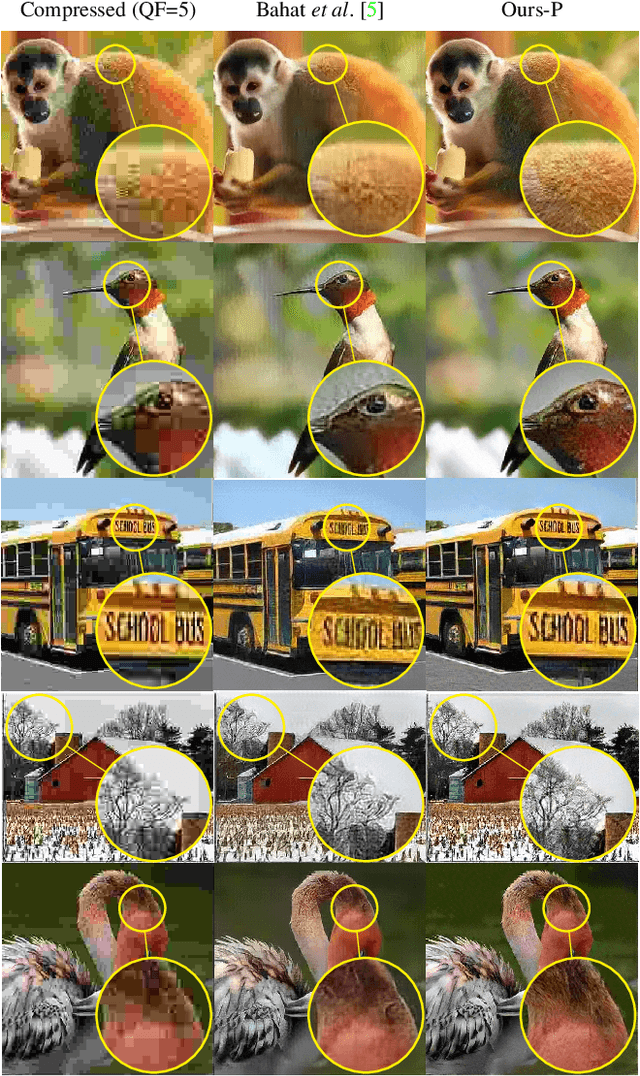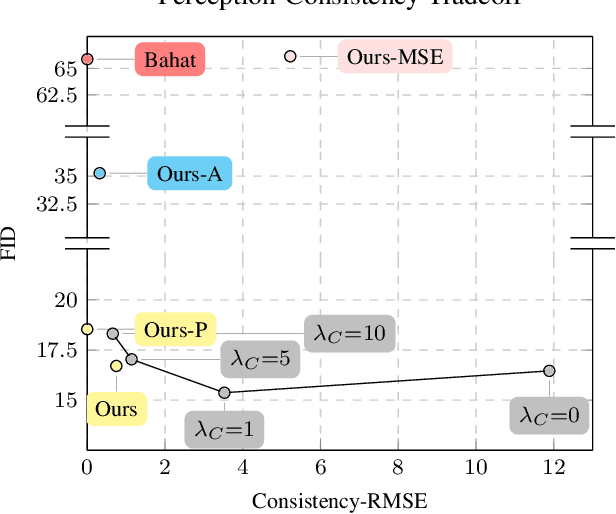Sean Man
Proxies for Distortion and Consistency with Applications for Real-World Image Restoration
Jan 21, 2025Abstract:Real-world image restoration deals with the recovery of images suffering from an unknown degradation. This task is typically addressed while being given only degraded images, without their corresponding ground-truth versions. In this hard setting, designing and evaluating restoration algorithms becomes highly challenging. This paper offers a suite of tools that can serve both the design and assessment of real-world image restoration algorithms. Our work starts by proposing a trained model that predicts the chain of degradations a given real-world measured input has gone through. We show how this estimator can be used to approximate the consistency -- the match between the measurements and any proposed recovered image. We also use this estimator as a guiding force for the design of a simple and highly-effective plug-and-play real-world image restoration algorithm, leveraging a pre-trained diffusion-based image prior. Furthermore, this work proposes no-reference proxy measures of MSE and LPIPS, which, without access to the ground-truth images, allow ranking of real-world image restoration algorithms according to their (approximate) MSE and LPIPS. The proposed suite provides a versatile, first of its kind framework for evaluating and comparing blind image restoration algorithms in real-world scenarios.
SILO: Solving Inverse Problems with Latent Operators
Jan 20, 2025



Abstract:Consistent improvement of image priors over the years has led to the development of better inverse problem solvers. Diffusion models are the newcomers to this arena, posing the strongest known prior to date. Recently, such models operating in a latent space have become increasingly predominant due to their efficiency. In recent works, these models have been applied to solve inverse problems. Working in the latent space typically requires multiple applications of an Autoencoder during the restoration process, which leads to both computational and restoration quality challenges. In this work, we propose a new approach for handling inverse problems with latent diffusion models, where a learned degradation function operates within the latent space, emulating a known image space degradation. Usage of the learned operator reduces the dependency on the Autoencoder to only the initial and final steps of the restoration process, facilitating faster sampling and superior restoration quality. We demonstrate the effectiveness of our method on a variety of image restoration tasks and datasets, achieving significant improvements over prior art.
High-Perceptual Quality JPEG Decoding via Posterior Sampling
Nov 21, 2022



Abstract:JPEG is arguably the most popular image coding format, achieving high compression ratios via lossy quantization that may create visual artifacts degradation. Numerous attempts to remove these artifacts were conceived over the years, and common to most of these is the use of deterministic post-processing algorithms that optimize some distortion measure (e.g., PSNR, SSIM). In this paper we propose a different paradigm for JPEG artifact correction: Our method is stochastic, and the objective we target is high perceptual quality -- striving to obtain sharp, detailed and visually pleasing reconstructed images, while being consistent with the compressed input. These goals are achieved by training a stochastic conditional generator (conditioned on the compressed input), accompanied by a theoretically well-founded loss term, resulting in a sampler from the posterior distribution. Our solution offers a diverse set of plausible and fast reconstructions for a given input with perfect consistency. We demonstrate our scheme's unique properties and its superiority to a variety of alternative methods on the FFHQ and ImageNet datasets.
 Add to Chrome
Add to Chrome Add to Firefox
Add to Firefox Add to Edge
Add to Edge